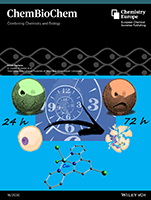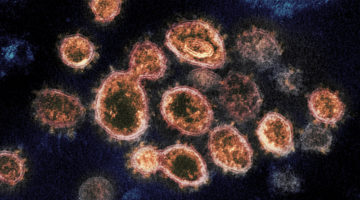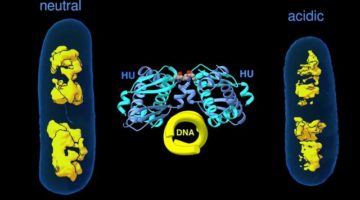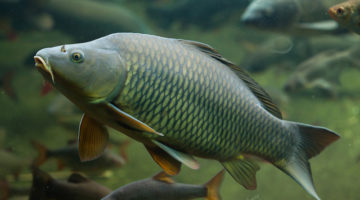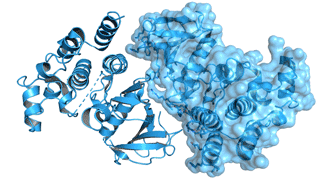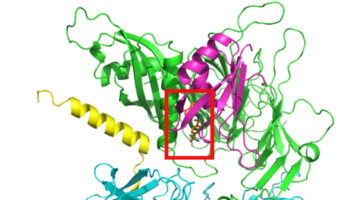Rotavirus, a major cause of infantile gastroenteritis, is responsible for the deaths of about 200,000 children per year. Although vaccines are available, the virus still circulates, and a fuller understanding of the viral structures is needed. Here, scientists investigate the structure and function of the last unsolved rotavirus structural protein. Read more »
Evaluation of Free Energy Calculations for the Prioritization of Macrocycle Synthesis
Free energy perturbation methods represent a paradigm shift in drug discovery, where computational methods inform benchtop activities. Macrocycles are highly constrained molecules, often resulting in nonintuitive structure–activity relationships requiring lengthy synthetic routes. Free energy perturbation methods can be used to predict potency, guiding synthetic chemistry efforts to de-risk complex synthesis. Read more »
Time‐Dependent Cytotoxic Properties of Terpyridine‐Based Copper Complexes
The cover feature picture shows the progressive activation of terpyridine‐based copper(II) compounds that are not cytotoxic against various cell lines after 24 h of incubation but become highly efficient after 72 h of incubation, with IC50 values in the low‐micromolar to nanomolar range. Read more »
Antibody from SARS Survivor Neutralizes SARS-CoV-2
Using structural data from the ALS and cryo-electron microscopy, researchers have characterized how an antibody binds to and neutralizes SARS-CoV-2. This work provides the basis for therapeutic and vaccine development for the SARS-CoV-2 virus, which is responsible for the COVID-19 pandemic. Read more »![]()
![]()
Crystal structure of the catalytic subunit of bovine pyruvate dehydrogenase phosphatase
The crystal structure of the catalytic subunit of bovine pyruvate dehydrogenase phosphatase provides new insights into the mechanism of the regulation of the activity of the pyruvate dehydrogenase complex. Read more »
Study Gains New Insight Into Bacterial DNA Packing
When bacteria are put in different environments, their genes start to adapt remarkably quickly because the proteins making up their chromosomes can pack and unpack rapidly. Researchers have now imaged this process at the molecular level, a discovery that could eventually enable scientists to develop strategies to control microbial behavior. Read more »
This Enigmatic Protein Sculpts DNA to Repair Harmful Damage
Scientists have discovered that a DNA-repairing protein performs its functions by first marking and then further breaking damaged DNA. The surprising findings have provided much-needed insight into how DNA repair works in healthy human cells, as well as how different mutations can translate into different diseases and cancer. Read more »
Off the Scales: Fish Armor Both Tough and Flexible
Humans have drawn technological inspiration from fish scales going back to ancient times: Romans, Egyptians, and other civilizations would dress their warriors in scale armor, providing both protection and mobility. Now, scientists have characterized carp scales down to the nanoscale, enabling them to understand how the material is resistant to penetration while retaining flexibility. Read more »
On-Off Switch for Regulating Tumor-Cell Growth
The mechanisms that affect the regulation of cell growth in certain tumor cells were revealed by a Genentech study of enzyme structures, conducted in part at the ALS. The work establishes a framework for the rational discovery of new therapeutics to improve upon currently existing treatments for certain cancers. Read more »![]()
![]()
How a Cancer Drug Targets Proteins for Degradation
Protein structures obtained by Novartis researchers helped reveal how a cancer drug promotes the degradation of proteins essential to cell proliferation. A detailed understanding of the drug’s mechanism of action is key to determining whether the protein-degradation system can be reprogrammed to degrade different targets. Read more »![]()
- « Previous Page
- 1
- …
- 9
- 10
- 11
- 12
- 13
- …
- 24
- Next Page »


